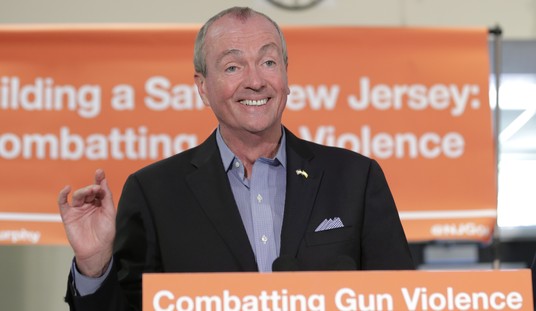Looks like Steve Mnuchin didn’t entirely buy the idea that the country’s economic woes over the COVID-19 pandemic and shutdown are over, either. Nor should he, as today’s weekly initial jobless claims report attests. Despite the surprising return to work shown in May, new jobless claims continued at pre-COVID-19 record levels, although still slowing:
In the week ending June 6, the advance figure for seasonally adjusted initial claims was 1,542,000, a decrease of 355,000 from the previous week’s revised level. The previous week’s level was revised up by 20,000 from 1,877,000 to 1,897,000. The 4-week moving average was 2,002,000, a decrease of 286,250 from the previous week’s revised average. The previous week’s average was revised up by 4,250 from 2,284,000 to 2,288,250.
The advance seasonally adjusted insured unemployment rate was 14.4 percent for the week ending May 30, a decrease of 0.2 percentage point from the previous week’s revised rate. The previous week’s rate was revised down by 0.2 from 14.8 to 14.6 percent. The advance number for seasonally adjusted insured unemployment during the week ending May 30 was 20,929,000, a decrease of 339,000 from the previous week’s revised level. The previous week’s level was revised down by 219,000 from 21,487,000 to 21,268,000. The 4-week moving average was 21,987,500, a decrease of 404,750 from the previous week’s revised average. The previous week’s average was revised down by 54,000 from 22,446,250 to 22,392,250.
At least this week showed an overall decrease in continuing claims. It still shows more than 20 million Americans receiving more than one week of unemployment benefits, with a four-week average of almost 22 million. The country may be reopening, but it’s still not showing in the jobs market, or at least not in this phase of it.
This might raise new questions about whether the Bureau of Labor Statistics has the correct modeling for the COVID-19 forced-shutdown environment. Their process threw a couple of gears over the last three months, leading to an artificially low unemployment rate, although it did capture the trending correctly. BLS is working on a fix to that model, but they might also need to take a look a model that showed a net 2.5 million job gain in a month full of 2M+ weekly initial jobless claims, too.
Of course, it could have been far worse had the government not acted to support payrolls through the CARES Act, and especially the Paycheck Protection Program. The Washington Post noted that it “suddenly” seemed successful in light of the May jobs report, although it clearly had been working all along. The question remained whether it had worked enough, and until yesterday the Trump administration hadn’t tipped its hand one way or the other.
Mnuchin finally made it clear in a Senate hearing that the White House wants to see more financial relief to deal with the impact of the shutdowns. That will likely mean more money for PPP, and perhaps other programs as well. There’s no need to rush it while funds still remain in these programs, but more will be needed, Mnuchin testified:
In testimony before the Senate Small Business Committee, Mnuchin said unemployment was too high and that administration officials wanted to work on further economic incentives. Possible avenues he floated included changes to the small business-focused Paycheck Protection Program and tax credits.
“We’re open-minded, but we absolutely believe small businesses — and by the way many big businesses in certain industries — are absolutely going to need more help,” he said. …
“Whatever we do going forward needs to be much more targeted particularly to the industries and small businesses that are having the most difficulty in reopening as a result of Covid-19,” he said. “We look forward to working with you and the rest of the committee over the next few weeks as we think about that.”
One change will be to a particularly perverse incentive:
Mnuchin also said “we’re going to need to fix unemployment” insurance.
“We knew there was issues with the enhanced unemployment where in certain cases we were paying people more not to work than work. I think we’ve seen from the recent numbers that didn’t have a big impact because people want their jobs. But we will have a significant amount of unemployment and we’re going to need to look at doing something there.”
That’s important for PPP recipients in the hospitality sector. In order to qualify for “forgiveness” of those fund, those businesses have to spend 60-75% of their PPP loans on payroll. They aren’t able to attract workers, however, because unemployment pays them much more money to not work. That process needs to get tweaked so that workers locked out because of COVID-19 still have their previous buying power but have incentives to return to the job when the job reopens.
Mnuchin makes clear the same point I made yesterday. We saw surprising rebound in May, but our economic crisis has not ended — not by a long shot. The US has to find a way to get Americans back on the job and businesses open for commerce ASAP, before those businesses and jobs evaporate permanently. One good jobs report is not enough.








